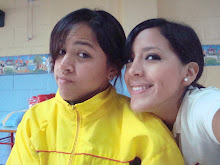
If a child experiences a developmental delay, this can compound over time. The principle of early intervention is to provide appropriate
therapies for children with disabilities, to minimize these delays and maximize their chances of reaching normal milestones in
development. Early intervention begins from
birth or first
diagnosis, and continues until age three. It involves specialized education and therapy services for the child, as well as support for the whole family through information, advocacy, and emotional support.
One definition of early childhood intervention is that of Michael Guralnick (1997), who wrote that it "may be best conceptualized as a system designed to support family patterns of interaction that best promote children's development." Sheila Wolfendale (1997) wrote that early childhood intervention has several goals: To provide support to families to support their children's development; to promote children's development in key domains such as
communication or
mobility; to promote children's coping confidence, and to prevent the emergence of future problems.
In some instances, the term early childhood intervention is used to refer only to services for children birth to age three (Spiker, Hebbeler, Wagner, Cameto, and McKenna, 2000), but in other instances it is used to refer to a wider range of early childhood. The Journal of Early Intervention, an
academic journal in the field, covers birth to age eight.
In the past it has been simply called early intervention, but this term is also used in other fields, such as
mental health (where it refers to intervention in the early stages of
mental illness).
Robin McWilliam (2003) developed a model that emphasizes five components: Understanding the family ecology through
co-maps; functional needs assessment through a routines-based interview; transdisciplinary service delivery through the use of a primary service provider; support-based home visits through the Vanderbilt Home Visit Script; and collaborative consultation to child care through individualized intervention within routines.
[1] "These services are to be provided in the child's natural setting, preferably at a local level, with a family-oriented and multi-dimensional team approach" (
European Agency for Development in Special Needs).
Early childhood intervention may be provided within a centre-based program (such as
Head Start in the United States), a home-based program (such as Portage in
Britain), or a mixed program (such as
Lifestart in
Australia). Some programs are funded entirely by the government, while others are
charitable or fee-paying, or a combination of these.
An early childhood intervention team generally consists of
teachers with special education training,
speech and language pathologists,
Physical therapists (physiotherapists),
occupational therapists, and other support staff, such as
music therapists,
teacher aides/assistants, and
counselors. A key feature of early childhood intervention is the transdisciplinary model, in which staff members discuss and work on goals even when they are outside their discipline: "In a transdisciplinary team the roles are not fixed. Decisions are made by professionals collaborating at a primary level. The boundaries between disciplines are deliberately blurred to employ a 'targeted eclectic flexibility'" (Pagliano, 1999).
Goals are chosen by the families through the annual or biannual
Individual Family Service Plan (IFSP), which evolves from a meeting where families and staff members talk together about current concerns, as well as celebrating achievements.

